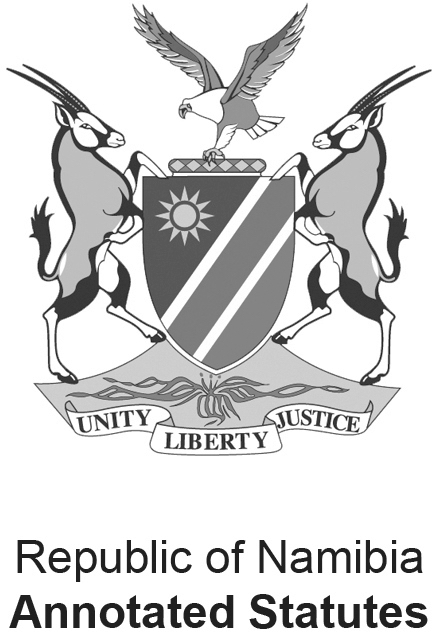
Nature Conservation Ordinance, 1975
Regulations for Large Carnivores in Captivity, 2012
Government Notice 85 of 2012
- Published in Government Gazette 4911 on 29 March 2012
- Assented to on 2 March 2012
- Commenced on 29 March 2012
- [This is the version of this document at 15 November 2017.]
- [Note: The version of this legislation as at 15 November 2017 was revised and consolidated by the Legal Assistance Centre and the Government of the Republic of Namibia. All subsequent amendments have been researched and applied by Laws.Africa for NamibLII.]
1. Definitions
In these regulations a word or expression defined in the Act has that meaning, and unless the context indicates otherwise—“captivity” means the restriction or confinement of an animal causing such animal to become partially or fully dependent on being fed;“euthanasia” means the induction of death with minimal pain, stress or anxiety;“large carnivores” means lions, cheetahs, leopards, spotted hyeanas, brown hyeanas and wild dogs;[The word “hyaenas” is misspelt in both its uses in this definition, as reproduced above.]“Minister” means the Minister of Environment and Tourism;“rehabilitation centre” means a facility which complies with the requirements set out in regulation 5;“sterilised” in the case of a male animal refers to vasectomy or castration, and in the case of a female animal refers to the double ligation of the fallopian tube to prevent pregnancy; and“wildlife rehabilitation” means a process of adapting a captive animal’s behavior and condition such that it is suitable for reintroduction to the wild.2. Keeping large carnivore in captivity
A person who keeps a large carnivore in captivity in terms of a permit must ensure that such carnivore is—3. Permit conditions
A person who keeps large carnivores in captivity in terms of a permit must—4. Capturing of large carnivores
A person who captures large carnivores must either—5. Rehabilitation centre
6. Requirement of owner or permit holder
7. Requirements of capture cages and temporary holding facilities
8. Permanent holding facility
9. Carcass and parts of captive animal
History of this document
15 November 2017 this version
Consolidation
29 March 2012
Commenced
02 March 2012
Assented to